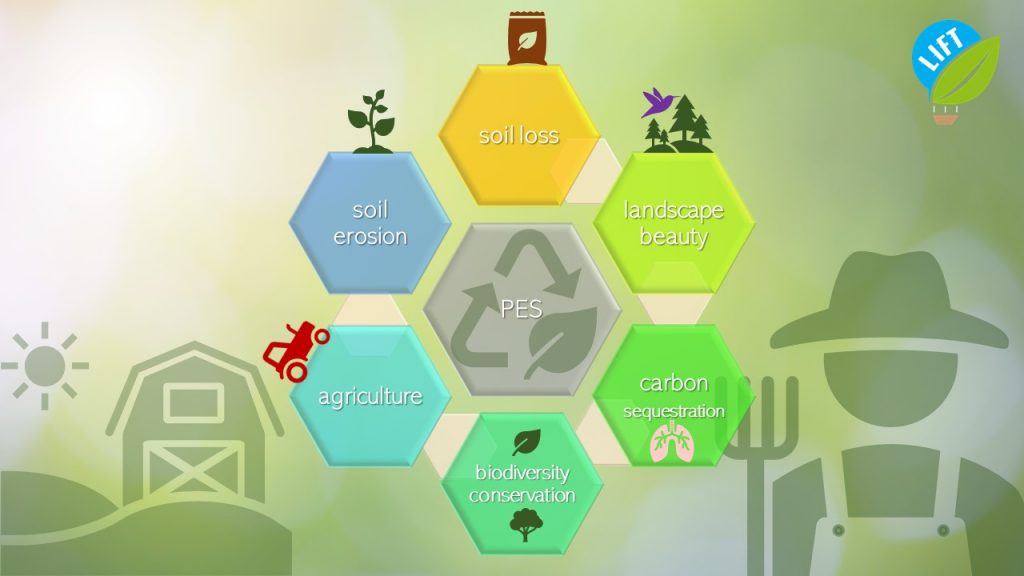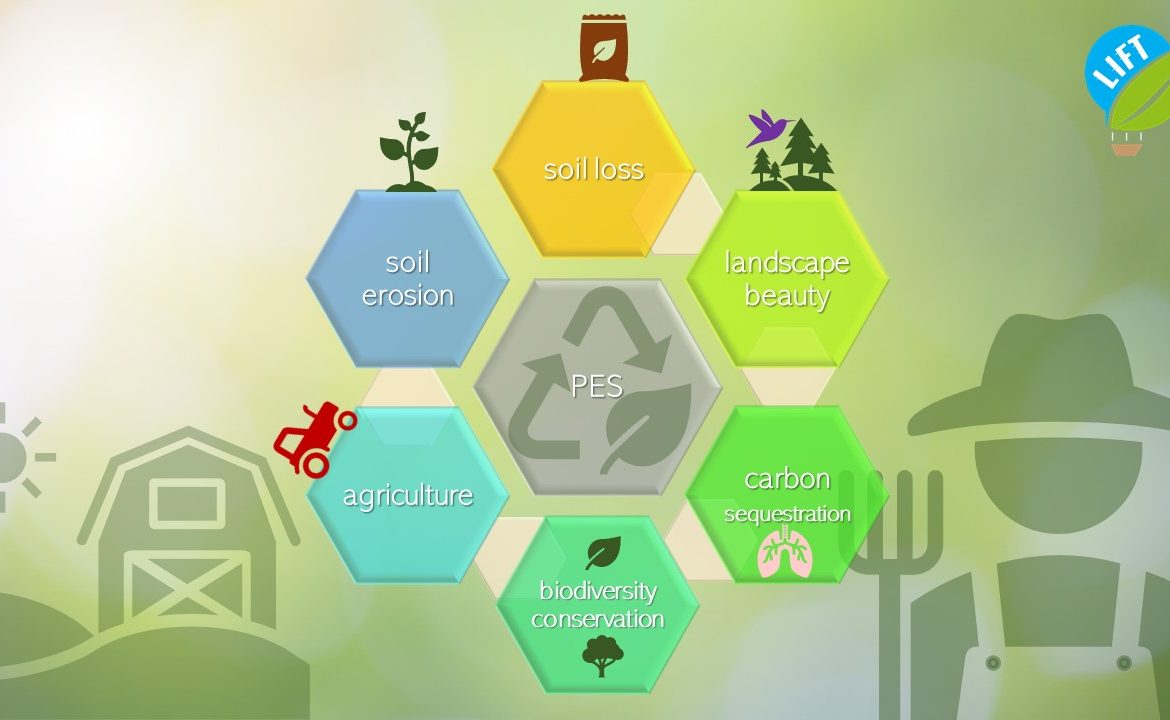BLOG: Payments for environmental services (PES): Theory vs LIFT findings
BLOG: Payments for environmental services (PES): Theory vs LIFT findings
Agriculture influence many areas of today’s world – let’s look at some of them. Firstly, agriculture has a great impact on ecosystem processes as it exploits and modifies all components of ecosystem (air, soil, water and biodiversity). In economic terms agriculture is source of income for rural communities, it is an engine of economic growth in developing countries. Considering social and cultural aspects agriculture gives a lot of employment opportunities, it improves live of rural inhabitants and creates a favourable environment for the flow of farming traditions and knowledge.
Here we would like to cite Daniela Ottaviani (2011) who points out that Payment for Ecosystems Services is an instrument that can be applied to the agricultural sector easily because it interrelates with all the dimensions of sustainability (economic, social and environmental). This payment is given to support land-use or agronomic practices which can protect or restore natural ecosystem processes. PES is expected to function in the case of present or future danger to ecosystem and in the case when opportunity cost for alternative practises is not elevated enough.
The point of PES in the rural areas is to activate agronomic practices that protect the proper functioning of ecosystem services as well as ensure productive basis for a long-run food security. In the PES scheme the seller is the person that provides the ecosystem services and buyer is the one who enjoys these services. The categories of PES projects are PES for water, carbon sequestration, biodiversity, and landscape beauty or as PES for bundled services. Let’s examine each category and its examples (based on Ottaviani, 2011).
- PES in agriculture and soil loss and soil erosion – In Costa Rica and Nicaragua the PES project included planting high densities of trees and shrubs in pastures, feeding livestock on fodder, rather than natural vegetation, and creating windscreens with shrubs and fast-growing trees.
- PES in agriculture and landscape beauty – protection of landscape beauty (aesthetics). In Greece the PES project included rewards for conservation of 6000 hectares in Amfissa, region with olive oil trees, which are 150 years old.
- PES in agriculture and carbon sequestration – afforestation (from barren land to trees), to agroforestry (from crops to crops mixed with trees), reforestation (from logged forest to replanted forest) and forest conservation are the ways to achieve carbon sequestration. Example is Pearl River Basin in the Guangxi Zhuang Autonomous Region of China that converted barren land, that was used as a grazing area into 4000 hectares of reforested area.
- PES in agriculture and biodiversity conservation – there are many ways for biodiversity encouragement such as protecting patches of native habitats, running agricultural activities which provides suitable ecological conditions for species’ occurrence in the soil, water and air compartments, and providing adequate connectivity for wildlife amongst natural habitats. Example here is again Costa Rica and creation of La Selva Biological Corridor. PES project covered 729 km² of corridor that was aggregated from private properties and turned into protected area. The personal properties were private forests, areas of bananas, sugarcane and cattle grazing cultivation.

After a little bit of theory, it is important to mention that the payments for ecosystem services is one of the areas of LIFT project’s research. During the 2nd edition of workshops carried out across the EU, our partners have asked stakeholders about their opinion on the matter. The areas that were thoroughly discussed were the incentives of participating in PES, barriers and difficulties that are associated with providing ecosystem services and finally the opinion of stakeholders on design of PES. The obvious incentive that was mentioned in the conversations during workshops of LIFT were economic benefits of PES and provision of equipment that facilitates agricultural work and productivity. Other incentives mentioned were demand needs of customers and believe that while providing ecosystem services, farmers will provide products of better quality.
When turning to barriers of PES, the main problem of farmers is the lack of interest in seeking information or adopting new practices. Another barrier is the aging population of farmers, as this kind of job is no longer attractive nowadays. Farmers claim than chemical-free cultivations face many difficulties resulting in in high loss rate in agricultural production; higher production cost; more time and effort (higher labour cost). Finally, farmers have little trust in the government institutions, they are disappointed in the governmental actions that failed to support their income.
After expressed opinions of stakeholders, LIFT asked about suggestions associated with PES. Stakeholders were asked what could be improved in the PES design. The answers here differ depending on the country, region or type of farming. LIFT acknowledges that each rural area is different in terms of terrain structure, climate, traditions and many others. However, we would like to mention some of the suggestions of farmers to have a broader view on the matter. First, the stakeholders suggest stopping or limiting the chemical inputs. In the case of limitation, they proposed a control of the correct implementation. Moreover, they stated that PES could be designed in the area related to the sustainable use of water, as well as to the management of pollutants. The areas that were pointed out for financial support were green manuring and integrated water management. Farmers also proposed to divide area into ecological zones. Last but not least, there is a need for advisory support for farmers in each area, in order to have direct access to tailor-made advice.
In a nutshell, it can be stated that PES will be very important matter in the future of sustainable farming, however there are many areas to be improved for better functioning of PES and including more and more farmers in ecosystem services.
References
Ottaviani Daniela (2011). The role of PES in agriculture, Food and Agriculture Organization of the United Nations, Rome, Italy. Retrieved from http://www.fao.org/3/i2100e/i2100e01.pdf

